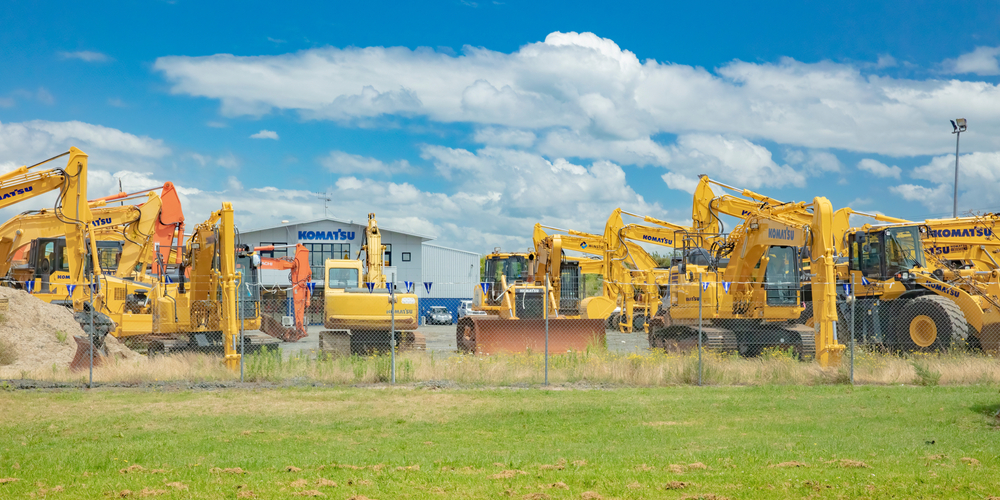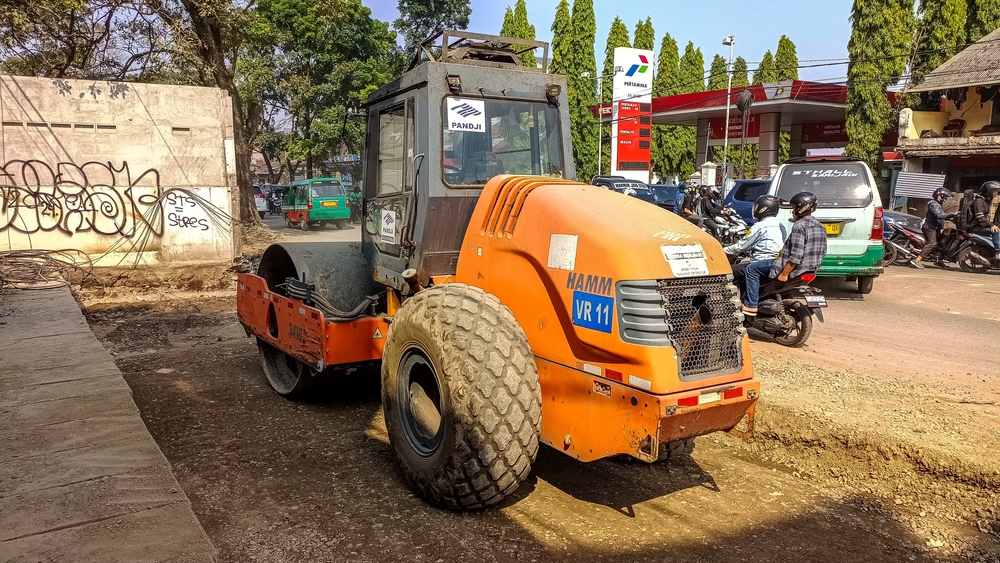Selecting the right backhoe loader is crucial for construction and landscaping professionals, as it directly influences the efficiency and safety of various projects. The lifting capacity of a backhoe loader stands out as a key metric, reflecting the machine’s ability to handle heavy loads.
Understanding this capacity involves considering how much a backhoe can lift and ensuring the load’s center of gravity is ideally located on the forks for optimal balance. This balance is vital for the operational performance and safety of the equipment.
How Lifting Capacity Defines Backhoe Loader Performance
Lifting capacity is a crucial indicator of a backhoe loader’s performance, providing insights into the maximum weight the machine can handle safely. This capability is pivotal, reflecting the equipment’s strength, stability, and reliability under various operational scenarios. The essence of a backhoe loader’s lifting capacity can be distilled into several key aspects:
- Hydraulic Power: The backbone of a backhoe’s lifting capability. The more robust the hydraulic system, the greater the force applied through the loader arm and bucket, enhancing lifting capacity.
- Loader Arm and Bucket Design: Innovations and engineering in the design contribute to efficient load handling and stability during lifting operations.
- Machine Balance and Stability: The overall design and weight distribution of the backhoe affect its ability to lift and transport heavy loads safely.
For those in the construction industry, understanding a backhoe loader’s lifting capacity is not just about knowing how much it can lift. It’s about grasping the potential to enhance operational efficiency and safety. Here’s why lifting capacity is a game-changer:
- Versatility in Tasks: From relocating large boulders to hoisting substantial supplies, a higher lifting capacity broadens the scope of tasks a backhoe can undertake.
- Operational Efficiency: Machines with greater lifting capacities can reduce the number of trips required to move materials, saving time and fuel.
- Safety Considerations: Understanding and adhering to the lifting capacity ensures the safety of operators and minimizes the risk of accidents.
Key Influences on Backhoe Lifting Capacity
A backhoe loader’s lifting capacity is not a static figure; it’s shaped by various factors that affect how the machine performs under different conditions. Understanding these influences is crucial for maximizing a machine’s efficiency and extending its service life. Here are the pivotal factors:
Hydraulic Power
At the core of a backhoe’s lifting prowess is its hydraulic system. The capability of the hydraulic pump to generate force is what enables the loader arm and bucket to lift heavy materials.
The more powerful the pump, the heavier the load that can be managed. This is why machines equipped with advanced hydraulic systems are sought after for tasks requiring significant lifting power.
Counterweight Distribution
A well-balanced machine is key to safe and effective lifting. Backhoe loaders designed with optimal counterweight distribution enhance the machine’s stability, reducing the risk of tipping while lifting heavy loads.
This balance is critical, especially when operating on uneven terrain or when handling materials at the edge of the machine’s lifting capacity.
Attachment Types
The versatility of a backhoe loader is partly due to its ability to accommodate various attachments. However, each attachment brings its own capacity and suitability for certain materials and tasks.
Forks, buckets, and other specialized attachments can significantly influence the overall lifting capacity. Operators must select attachments not only based on the task at hand but also considering how they affect the machine’s ability to lift safely and efficiently.
Comparative Analysis of Leading Backhoe Loader Models
In the realm of construction equipment, backhoe loaders are indispensable, thanks to their versatility and power. To illustrate how models vary in terms of lifting capacity, a comparison of several top models from renowned brands is provided below:
John Deere 310SL HL
Known for its robustness and reliability, the John Deere 310SL HL boasts a remarkable lifting capacity of up to 3,379 kg. Its advanced hydraulic system and loader design make it a top choice for demanding lifting tasks.
Caterpillar 432F2
The Caterpillar 432F2, with a lifting capacity of approximately 3,251 kg, is celebrated for its sturdy construction and operational efficiency. It features an advanced hydraulic system and stability enhancements, making it a formidable contender in the heavy-duty category.
CASE 580N EP
Blending fuel efficiency with powerful performance, the CASE 580N EP offers a lifting capacity of around 2,948 kg. It’s designed for balance and power, ensuring safe and productive lifting operations.
Volvo BL61B
The Volvo BL61B, offering a lifting capacity of up to 2,800 kg, is noted for its ergonomic design and hydraulic efficiency. This model stands out for its operator comfort and machine effectiveness in lifting applications.
These models demonstrate the industry’s advancements in backhoe loader design and capability. When choosing a backhoe loader, consider not only the lifting capacity but also other features like fuel efficiency, durability, and ease of operation, which collectively contribute to the machine’s value and performance.
Strategic Selection: Finding the Ideal Backhoe Loader for Your Projects
Choosing the most suitable backhoe loader for your construction or landscaping needs is a critical decision that goes beyond merely comparing lifting capacities. It involves a thorough analysis of various operational and economic factors to ensure the equipment aligns with your project requirements and budget constraints. Here’s a step-by-step guide to navigate this process effectively:
1. Assess Your Project Requirements
Determine the scope and scale of your projects. Consider the types of tasks the backhoe loader will be performing, from digging and excavation to lifting and transporting materials.
Identify the materials you’ll be handling, noting their weight and size, to ensure the backhoe’s lifting capacity and attachments are appropriate for the job.
2. Evaluate Worksite Conditions
Analyze the conditions of your typical worksites, including terrain, space limitations, and accessibility. This will help in selecting a model that offers the right balance of power and maneuverability.
Consider environmental factors such as climate and soil type, as these can influence the choice of tires or tracks and other machine specifications.
3. Budget for Maintenance and Operation
Calculate the total cost of ownership, including initial purchase price, fuel consumption, maintenance, and potential repairs. Opt for models known for their fuel efficiency and durability to minimize long-term expenses.
Investigate warranty options and service agreements that could offer additional value and reduce operational costs.
4. Consider Machine Durability and Ease of Maintenance
Look for backhoe loaders built with high-quality materials and robust construction to withstand the demands of your projects.
Check for easy access to maintenance points to ensure routine checks and repairs can be conducted swiftly and efficiently.
5. Explore Attachment Availability and Compatibility
Ensure the backhoe loader can be equipped with a variety of attachments suited for your projects, enhancing the machine’s versatility.
Verify attachment compatibility across different models or brands if you already own equipment that you wish to use with the new backhoe loader.
6. Conduct Hands-on Demonstrations
Arrange for in-person demonstrations of the backhoe loaders on your shortlist. Operating the equipment firsthand can provide invaluable insights into its performance and ergonomics.
Test different attachments and simulate common tasks to gauge the machine’s suitability for your work.
7. Consult with Industry Experts and Sales Representatives
Leverage the knowledge of sales representatives and industry experts who can offer personalized advice based on your described needs.
Ask about customer experiences and seek recommendations for models that have proven reliable and cost-effective for similar applications.
Conclusion
The lifting capacity of a backhoe loader is a critical factor that affects its versatility and efficiency in construction and landscaping projects. Understanding the key factors that influence lifting capacity and comparing the specifications of leading models can help professionals choose a backhoe loader that best suits their needs.
Remember, the right backhoe loader is not just about the highest lifting capacity; it’s about finding the perfect balance between power, efficiency, and operational requirements. Use this guide as a starting point in your search for the ideal backhoe loader, and ensure your construction projects are powered by the right machine.
Choosing the right equipment is essential for the success of your projects. With the insights provided in this article, you’re well-equipped to make an informed decision, ensuring your construction or landscaping work proceeds smoothly, safely, and efficiently.









